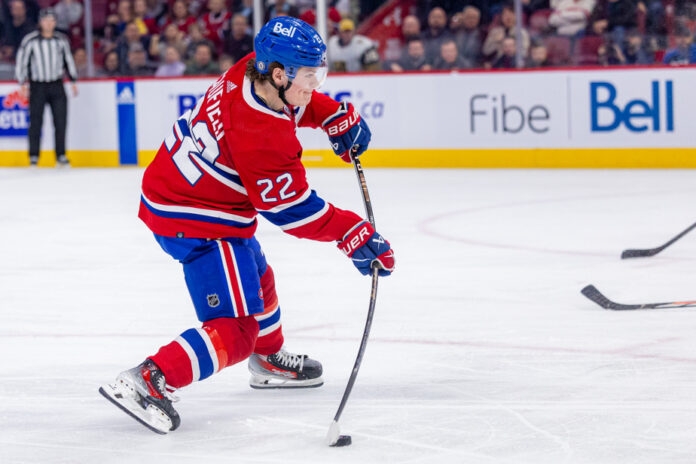If the Canadiens’ next 65 games played out at the pace of the first 17, Cole Caufield would conclude the season with 24 goals. Following the same calculation, this harvest, in addition to finding itself clearly below the expectations based on this natural marker, would be boosted by 15 goals in overtime.
This hypothesis is obviously absurd. But it nevertheless reflects Caufield’s production so far.
The winger scored three of his five goals after 60 minutes of regulation play. He also scored one on the power play and another at five-on-five. In this last category, it is a bit problematic.
We can only wonder about this drastic drop in speed in this phase of the game. This drop is transposed, although to a lesser extent, into a numerical advantage.
A glance at a series of individual indicators leaves one wondering.
The observation is as simple as it is brutal: the puck just doesn’t seem to be going into the goal. Because, at five against five, Caufield generates exactly the same number of expected goals as last year. He even shoots a little more often, despite slightly less ice time.
His efficiency rate, however, is staggering, and not in a good way: barely 2.44% of his shots on target have so far converted into goals. At last year’s pace, he would have already scored six to seven goals.
The observation is the same on the power play, although he shoots slightly less than before with an extra man or two. The consistency of his expected goals nevertheless suggests that the quality of the shots is there.
At first glance, number 22 didn’t seem keen on speaking out about his five-on-five drought. The solution he proposed? “Pull more,” he suggested dryly.
Faced with the astonishment of the representative of La Presse, the attacker elaborated somewhat.
Obviously in a better mood, he later admitted that he missed scoring goals. “That’s the best part of hockey! “, he said. “I have a good chance, I’ll convert a few eventually. »
Martin St-Louis put this relative lethargy into perspective. Overtime goals, after all, count as much as any other.
Regardless, he stressed that his protégé is “currently learning to do more on the ice besides scoring.”
“I’m not sure he’s been asked that in his young career. We are working on a lot of details. »
The head coach has been talking for a while now about the importance of Caufield playing well without the puck. However, his progress in this chapter is sometimes abstract.
“With Martin [St-Louis], we constantly talk about the value of puck possession,” he explained, before listing the “details” he focuses on: his positioning, how He and his linemates place the puck in space, his anticipation of the opponent’s movements and even his teammates… He also seeks to adapt to the diversified and “aggressive” coverage of other shorthanded teams.
So many things that take time and which, possibly, will cost his record a few goals overall.
“Do you want him to score 50, but not be a complete player and not help his team win? Or that he scores 35 or 40 and is a guy we can use in a lot of situations? “, asked Martin St-Louis.
The answer being in the question, we will not add more on this subject. Otherwise to clarify that if, in addition, Caufield could return to a decent conversion rate of his shots on target when there are five CH players on the ice, his life and that of his team would certainly be smoother.















